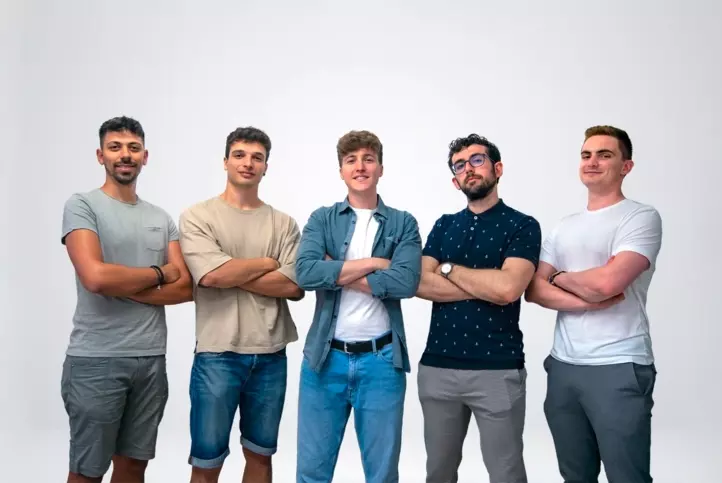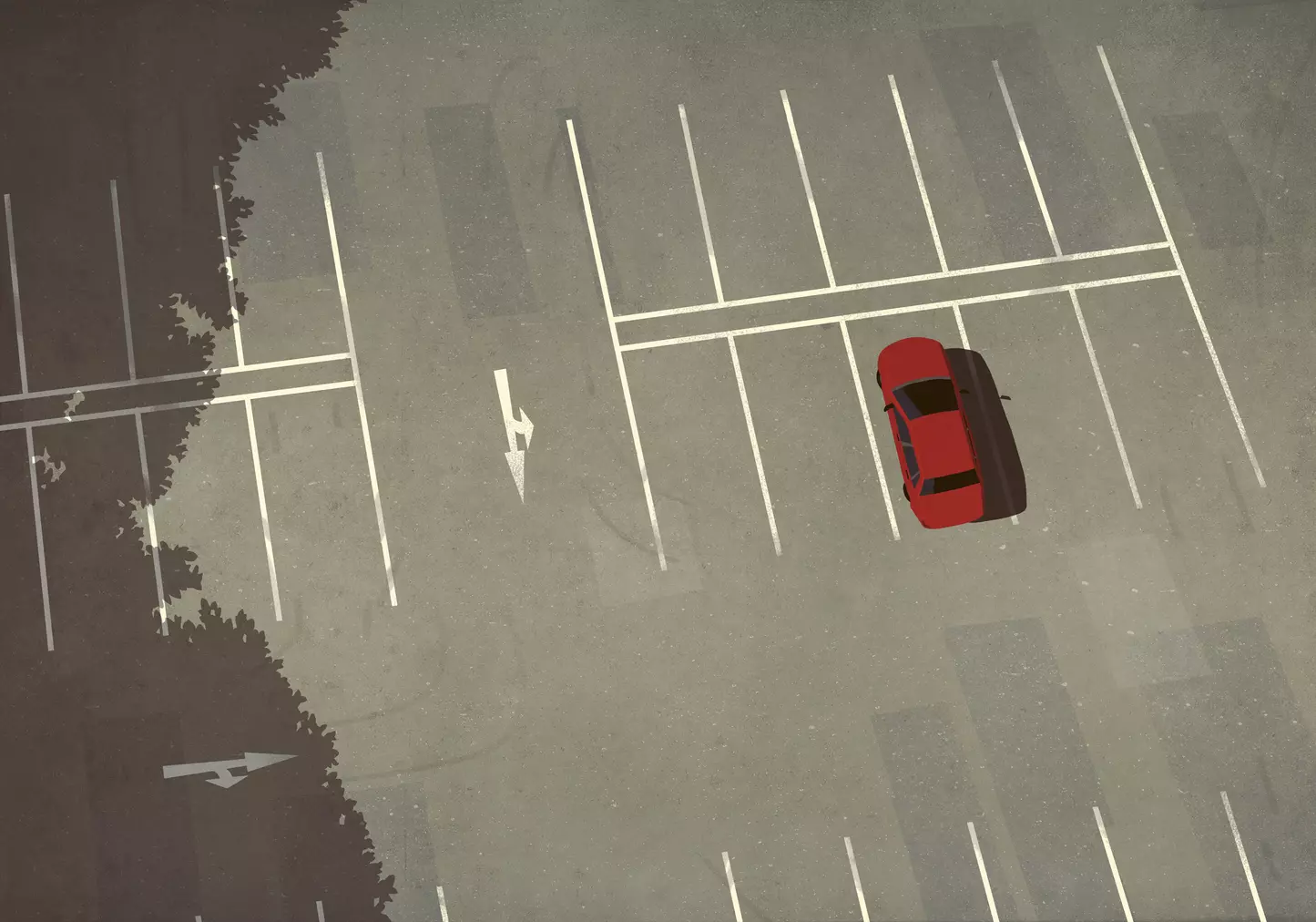Parking is the main problem for anyone travelling by car, especially in the city. The smart parking sector is growing, but there is no shortage of difficulties. CityZ, a young start-up from Caselle Torinese (Turin), offers a simple solution to a complex problem, enabling a 'Mobility as a service' function that can be integrated into any navigation or mobility app, and which promises to reduce traffic by 30%.
Thanks to an IoT sensor sticker on the asphalt, CityZ monitors the occupancy status of the stall and allows the motorist to know in real time via an app which parking space is free and where, to make reservations for parking or electric recharging at the charging stations, without wasting time and kilometres in the search. Infra The Mundys Journal interviewed Andrea Buri, founder and CEO of CityZ, for its 'Rocket' column (in the picture below, the founders of CityZ, from left: Fernando Falcone, Alessandro Rivalta, Andrea Buri, Igor Milano, Federico Buratto; Donato Falcone also joined the team, En).

What problem does your start-up want to solve? And how did your idea come about?
“When our start-up was created about a year ago, we asked ourselves a question: how do we solve the parking problem in cities? We went down two roads for two issues. The first is the stress accumulated in the search for a free space: many studies correlate the increase in accidents and CO₂ in the air with the time spent on this activity. The second is a problem that concerned the industry, since solutions with invasive technologies, such as sensors piercing the asphalt or the road surface, which in Italy is often historical, or installing numerous cameras, with consequent privacy problems, could not be overcome. We therefore tried to go in both directions with a single solution. The initial idea was to create a hardware and software infrastructure. In the first case we prototyped a new type of adhesive smart sensor which, instead of being 'bolted' to the road, sticks directly to it, as if it were scotch tape. The glue used is designed specifically for asphalt, so it has enormous strength. On the software side, we started with the idea of developing our own application, but soon realised that we would have Google Maps and Waze as competitors. In each of these applications, however, the smart parking service was missing, so we created an IT service that could be integrated into each application.”
What results have you achieved so far?
“Last year was a year full of feedback from the market in the MaaS and ITS (Intelligent transport system) sector, as well as recognitions, such as Talent Garden in the 2031 special prize (former Marzotto prize for start-ups, ed). In addition, a few months ago we made Forbes Italy's top 100 under 30 list. In addition to the funding, this helped us to make ourselves known and get to market as quickly as possible.”
How does the technology behind your innovation work?
“The IoT sensor, the moment it is glued to the asphalt, starts to detect the condition of the stall, whether it is free or occupied. When the vehicle arrives, it sends a signal via a LoRaWan transceiver to a gateway, of which cities today are full. This forwards the message via the Internet to our servers, in real time. From there on, we handle the data differently depending on the customer. We use the data collected in this way to create statistics and analyses. To date, we can only have this in real time, but it will be interesting in the near future to be able to make predictive analyses of parking utilisation and occupancy rates to meet the needs of cities. For example, if a new supermarket is to be built or a fair is to be held in a certain area, it will be interesting to predict and understand what the parking trend might be according to historical data.”
What are the quantifiable benefits of your solution?
“The big advantage is the integrability to asphalt, which does not damage historical pavements. After that, the 'scalability' of the system. And finally, sustainability, not so much in the mass production of sensors or in the sensor itself (although we are trying to use recycled materials), but in the final service itself, which will create benefits in terms of environmental impact.”
What strengths do you think make the content of your project attractive?
“Our focus is to get in touch with companies that manage mobility and parking payments, we have noticed various interests from these entities, to connect our system with services already provided to the city, such as renewable energy sources, electronic toll systems and parking payments. It is a service that should be added to others that already exist on the market.”
What are the next steps you intend to take? And what goals do you set for yourself in the medium to long term?
“This year's goals are definitely to close a round of investments that will allow us to expand the team and to be on the market by the end of the year with as many sensors as possible. Doing an initial average production to already have control over a certain amount of parking data in a certain city.”
How is composed your team? What is the added value that your young start-up can offer, in its way of working and thinking?
“We are all 'under 30'. On the one hand, young age is generally seen as a symptom of inexperience, but we took an innovative view of an old problem and several companies showed interest in our idea. Moreover, for us the age factor has always been an advantage, insofar as it has allowed us to fully believe in our idea and take the risks, on a personal level. Nonetheless, we are supported by authoritative partners (such as Accenture or the I3P incubator of Turin’s Polytechnic University) and we also follow the opinions of experts in the field and consultants, meeting with them before each decision. We have a start-up mentor in the team, Massimo De Piccoli, who has 20 years of expertise in the automotive industry and helps us with decisions where a little more experience is necessary.”
What is Rocket
'Rocket' is Infra Journal's column dedicated to the most interesting start-ups in the world of infrastructure, mobility and smart cities. In the foreground, there are innovations, stories, ambitions and the faces of those who work there, to get to know the added value that distinguishes each of these young entrepreneurial realities. Rocket is a journey through innovative answers to common needs, a journey designed to discover how these emerging companies develop and grow, the strategies to put their ideas on the 'launch pad' with the aim of 'taking off' and 'flying' on the strength of their business, establishing themselves on the market.
A special space is reserved for projects developed by startuppers from all over the world and presented at the Innovation Hub at Leonardo da Vinci Airport, for an 'open innovation' initiative of Aeroporti di Roma's airport management and services. In response to ADR's 'Call for Ideas' some 530 start-ups expressed interest, of which 96 (62 Italian and 34 foreign) applied to take advantage of the investments offered by ADR to support innovative ideas.
